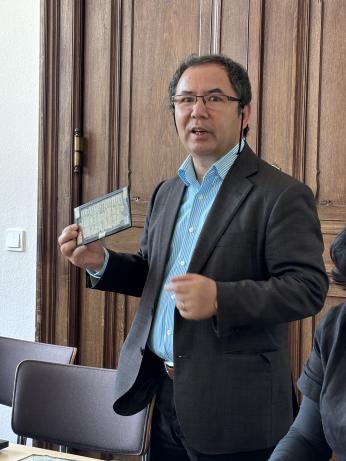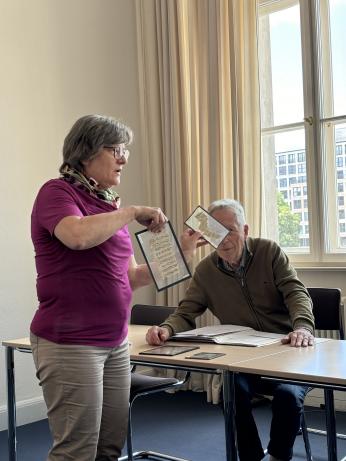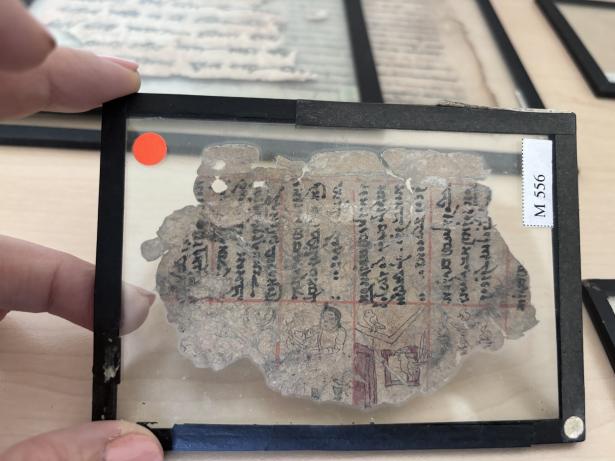On June 13, 2024 we had the unique opportunity to visit the Berlin Brandenburg Academy of Sciences and Humanities (Berlin-Brandenburgische Akademie der Wissenschaften (BBAW)) to explore the Turfan Collection. This remarkable collection consists of texts found around the Turfan oasis in East Turkestan (Autonomous Region of Xinjiang, People’s Republic of China), which were brought to Germany by the German Turfan Expeditions between 1902 and 1914. Various cultural and religious communities, including Buddhists, Manichaeans, and Christians, played a role in creating these texts, which were written in more than twenty languages and scripts. The primary focus of the long-term Academy Project “Turfan Studies” is the editing of the Turkish and Iranian part of the fully digitized Berlin Turfan Collection.
Our visit, part of the “Objects Revealed” series, centered on texts from the Turfan Collection that relate to astral knowledge—the main interest of our Working Group (VoH). Professor Abdurishid Yakup graciously provided a comprehensive overview of pre-14th-century astral texts written in various scripts in Central Asian languages from the collection. We examined a wide variety of bilingual texts on topics such as eclipses and calendars, but illustrations were in particularly short supply.

Prof. Abdurishid Yakup
Following his presentation, Dr. Christiane Reck, a Research Fellow at the BBAW, provided an introduction to Middle Iranian and Sogdian astrological texts.

Dr. Christiane Reck
Professor Peter Zieme, a senior researcher and leading Turkologist at the BBAW, discussed two significant astrological texts on the twenty-eight nakshatras (lunar mansions in Hindu astrology) and an Arabic text in the Sogdo Uyghur script—an extraordinary discovery among the manuscripts from Dunhuang and Turfan.

Prof. Peter Zieme
It was an incredible experience to not only learn about these manuscripts but also to see and handle them firsthand. We gained a deep appreciation for the challenges of reading and interpreting these texts as many of them are at least bilingual and are written in different formats. And most importantly most of the texts have survived only in fragmentary form.

Omen text with drawings, Depositum der Berlin Brandenburgischen Akademie der Wissenschaften in der Staatsbibliothek zu Berlin—Preußischer Kulturbesitz Orientabteilung. Shelf no. M556.
We are grateful to the three colleagues who organized such an informative and inspiring presentation on the Turfan collection’s material related to astral knowledge. In the following interview, Prof. Yakup, an expert in Turfan studies, Old Uyghur and Turkish languages, offers an overview of the manuscripts and shares his insights into their significance. His passion for these texts, which began in the 1990s, has evolved into a deep appreciation and expertise in the multidisciplinary study of these texts, which were found by chance in the Turfan oasis in a poor condition.
